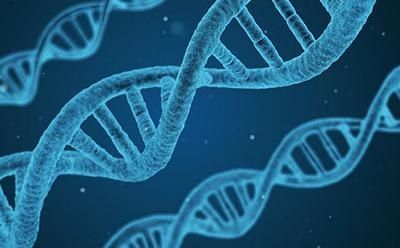
Arriving at the Third International Summit on Human Genome Editing a week ago, my entrance was temporarily blocked by a security guard who was concerned to prevent the entry of a small group of protesters handing out leaflets in the cold. They each wore a surplice bearing a red ‘stop’ sign and the motto ‘stop designer babies.’
The last international summit, in 2018 in Hong Kong, certainly cast a shadow. That was the event at which the Shenzhen-based biotech entrepreneur, He Jiankui, reported experiments that had, by then, resulted in the birth of two children with deliberately modified genotypes. That experience was seemingly enough to persuade the organisers to focus this third summit (for two days, at least) resolutely on therapeutic uses of somatic genome editing. Two basic strategies were discussed, one a cell-based therapy involving the transfusion into patients of cells that have been genetically modified in the laboratory to carry out a therapeutic function, the other involving the introduction of gene therapy agents directly to patients to modify the DNA in their own cells in situ. The experience of the last summit may also have accounted for the disclaimer with which successive presenters opened their talks (‘MY PRESENTATION IS NOT ABOUT HERITABLE GENOME EDITING’).
The decision to focus on somatic genome editing created a number of valuable opportunities. The summit seemed both to embrace more diverse perspectives than previous editions, and to involve a greater number of people working in the Global South. Granted, the dominant triangulation of research remained between the US, the UK and China (albeit that there was no sponsoring organisation based in China this time). But starting with a session on ‘hopes and fears’ for genome editing allowed the theme of global justice to surface early and to frame the discussions.
One notable feature was a session on the first day devoted to genome editing strategies for Sickle Cell Disease (SCD). SCD disproportionately affects those already more likely to experience structural disadvantage, whether within the societies of the Global North or in the SCD hotspots in sub-Saharan and North-East Africa, India and the Middle East. These disadvantages affect them at every level, from availability of diagnosis and support, to access to treatment and the likelihood of mortality. The summit heard movingly from Victoria, the first patient treated with a CRISPR-based gene therapy in US. The treatment had released her from the pain and limitation of the disease to lead the kind of life that unaffected people might take for granted. Her lived experience reflected a trope for the ambition expressed by many researchers at the conference: to find a ‘safe, effective, one-shot, curative and affordable gene therapy’.
There was some inspiring science on display, showing how approaches to genome editing therapeutics were moving successfully from systems that create toxic double-strand breaks in DNA to base editing and prime editing strategies, and the development of innovative delivery systems. This was not a scientific conference, however. Almost all the research described had already been published and discussed in the field. So, bracketing out what remained to be demonstrated in research (‘safe, effective, one-shot, curative’), it was really at the last hurdle (‘affordable’) that the discussion stumbled. And here a space of genuine engagement opened between what were hitherto essentially two audiences, scientific researchers and non-scientists, sharing the same venue.
In the last century, the question ‘who owns science?’ became salient following the determination not to allow the privatisation of knowledge about the human genome. Nonetheless (as speakers at the summit emphasised) the ‘human genome’ still remains largely the genome of the Global North. In closing the summit, members of the organising committee drew attention to their strongly stated call to action contained in the closing statement:
The extremely high costs of current somatic gene therapies are unsustainable. A global commitment to affordable, equitable access to these treatments is urgently needed.
Despite the many cosmopolitan governance initiatives that the research community has proposed for genome editing – and the increasingly audible voices of publics in different nations, cultures and traditions – innovation systems continue to be structured by underlying economic, strategic and geopolitical interests. Perhaps this accounts for the call to action being framed in terms of equitable access to treatments already situated within those structures (‘these treatments’). And perhaps it is why it is stated in the passive voice.